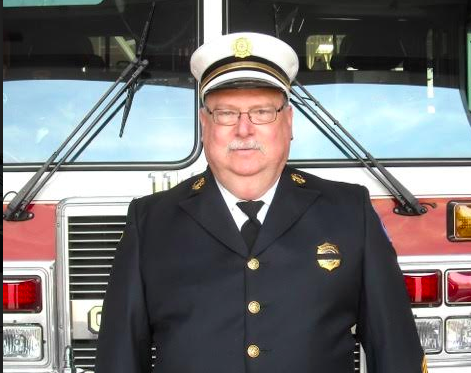
BY BARRY WARNER
As the Orangeburg Fire District Chairman of the Board of Fire Commissioners, Kenneth Gordon has the obligation of ensuring that the Fire District has the ability to extinguish and prevent fires. He makes decisions with the other commissioners on the board concerning fire safety, including the expenditure of funds to ensure protection regarding training and equipment for the volunteer firefighters. Within the confines of the district, there’s a mix of residential, commercial, health care and educational facilities.
“I have been active for 44 years and joined the Orangeburg Fire Department at 16 with 11 guys from Tappan Zee High School. As a junior firefighter I did everything except go into a burning building. At 18, I was taught the essentials of firemanship at the level of firefighter 1 (FF1), two times a week for 16 weeks at the Fire Training Center. My favorite part of the challenge was to drive a fire truck and I still do! Now firefighters take Emergency Vehicle Operator Course (EVOC) training, but then I learned defensive driving techniques in inclement weather, such as slowing down during snow events,” Kenneth Gordon told the Rockland County Times.
“This department is responsible for accidents and car fires that take place on a portion of the Palisades Parkway,” he continued. “Many times when cars are traveling at a high speed, the drivers lose control and hit a tree or cross over the median and crash into vehicles head-on that result in extrications. There are a lot of industrial buildings in Orangeburg that operate 24 hours a day. These firms have been good to us and allow us to do a lot of walk-throughs, so we know what we are up against in case of a fire. Many trucks pass through our area 24 hours a day and may contain hazardous materials. We have four firefighters on our team trained to fight hazmat fires.”
“As a former chief, I was in charge at the incident scene, where the Orangeburg Fire Department had fire extinguishment and fire rescue responsibilities,” Gordon said. “I would do a ‘size-up’ of the situation, ride around the building and give orders to the officers. Communication and safety on the fireground were most important. During the accountability phase, each firefighter would leave a tag on the truck and drop a tag to the safety officer, when they went into the building. After extinguishment of the fire, the fire inspector would determine the cause of the fire.”
According to the United States Fire Administration (USFA), each year more than 4,500 Americans die and more than 30,000 are injured in fires. Many of those deaths could have been prevented if people had a better understanding of fire:
- Fire is fast! In less than 30 seconds, a small flame can get completely out of control and turn into a major fire. It takes only minutes for thick black smoke to fill a house.
- Fire is hot! A fire’s heat alone can kill. Room temperatures in a fire can be 100 degrees at floor level and can rise to 600 degrees at eye level. Inhaling this super hot air will scorch your lungs.
- Fire is dark! Fire starts bright, but quickly produces smoke and complete darkness. If you wake up to a fire, you may be blinded, disoriented and unable to find your way around your home.
- Fire is deadly! Smoke and toxic gases kill more people than flames do. Fire uses up the oxygen you need and produces smoke and poisonous gases that kill.
Fire inspectors have numerous duties. Not only do they investigate the causes of fires, but they also help to prevent fires from starting. Fire inspectors are responsible for state and federal buildings by verifying that the structures and their fire prevention systems are up-to-date regarding fire and building codes. After a fire has occurred, a fire inspector is called in to analyze a scene. The inspector will interview witnesses and victims of a fire plus collect and process all of the evidence assembled. The scene may be reconstructed if the fire investigator needs to test a possible scenario. From there, the investigator will determine the cause of the fire-arson or accidental and may testify in court.
The Emergency Vehicle Operator Course (EVOC) explains the importance of emergency vehicle driving, the hazards of intersections and the risks of backing-up apparatus and vehicles. Also, the course focuses on the different weight distribution factors, the center of gravity when driving the vehicles and steps to prevent Emergency Vehicle Roll Over. Defensive driving techniques include space management, following distance and rate of closure, hazard identification plus correct braking techniques.
“This is a second family, as we call each other ‘brother firemen,’” Kenneth Gordon concluded. “Each one of us has his own duties and responsibilities, however, we do a lot of social activities together.”
For additional information about volunteering, visit www.orangeburgfd.org or call 845-359-5887.

You must be logged in to post a comment Login